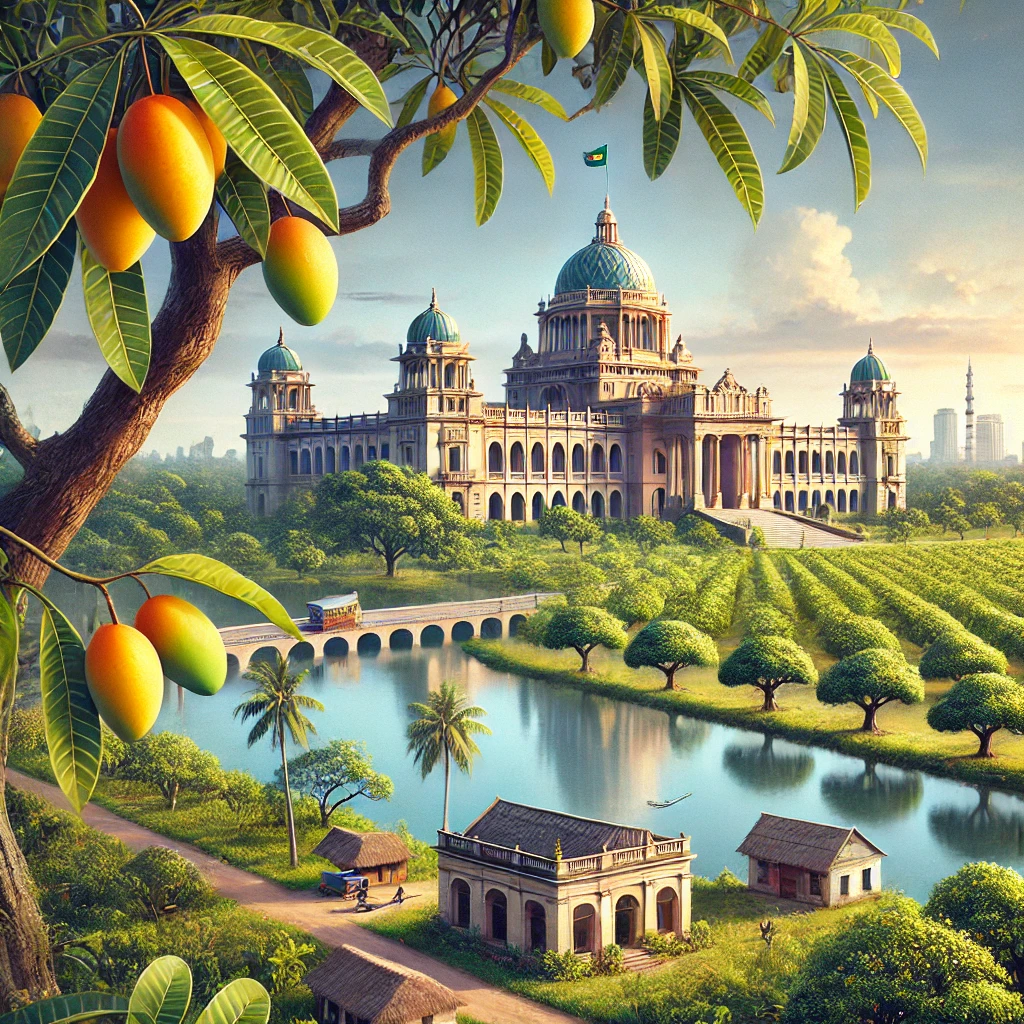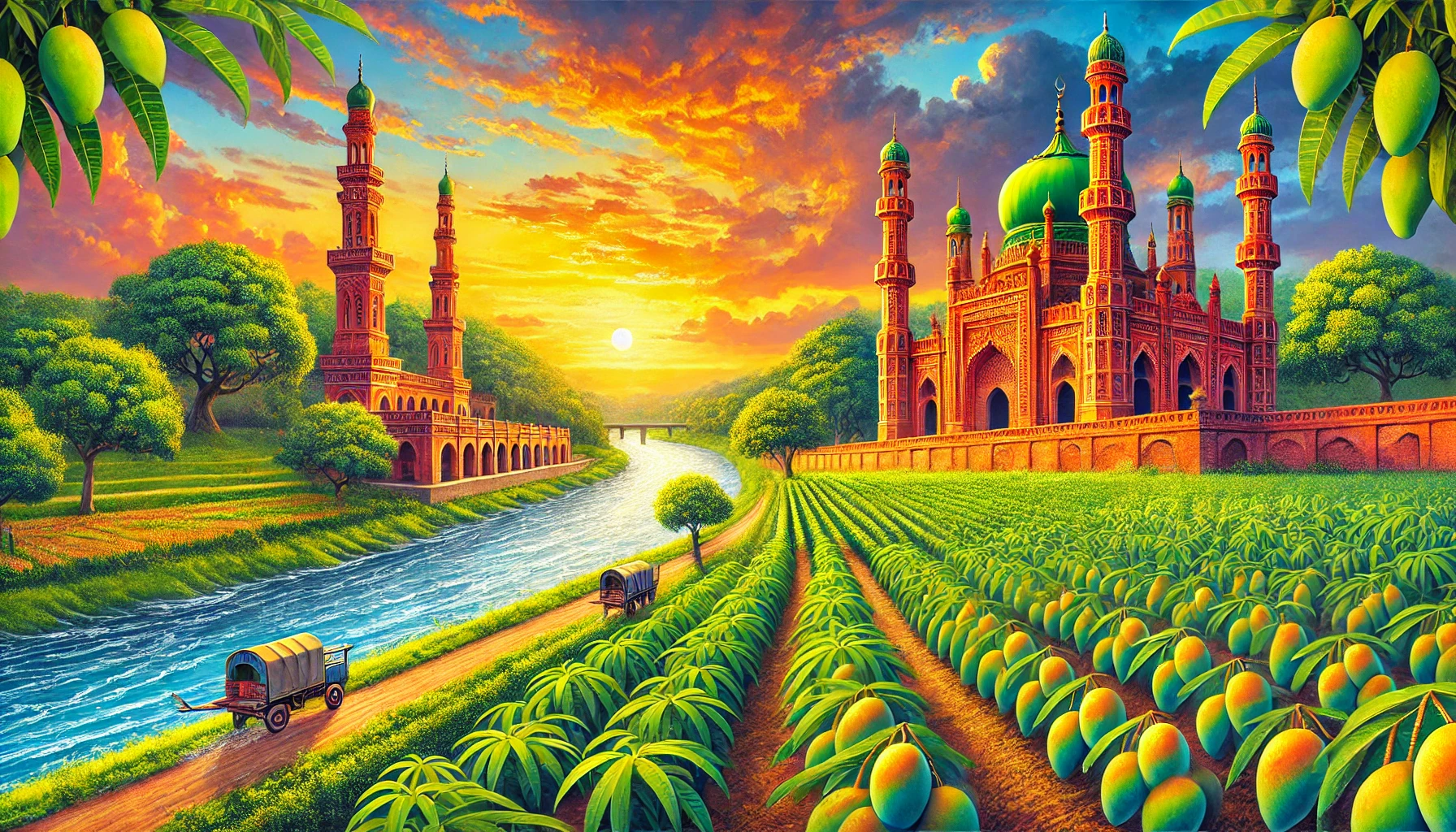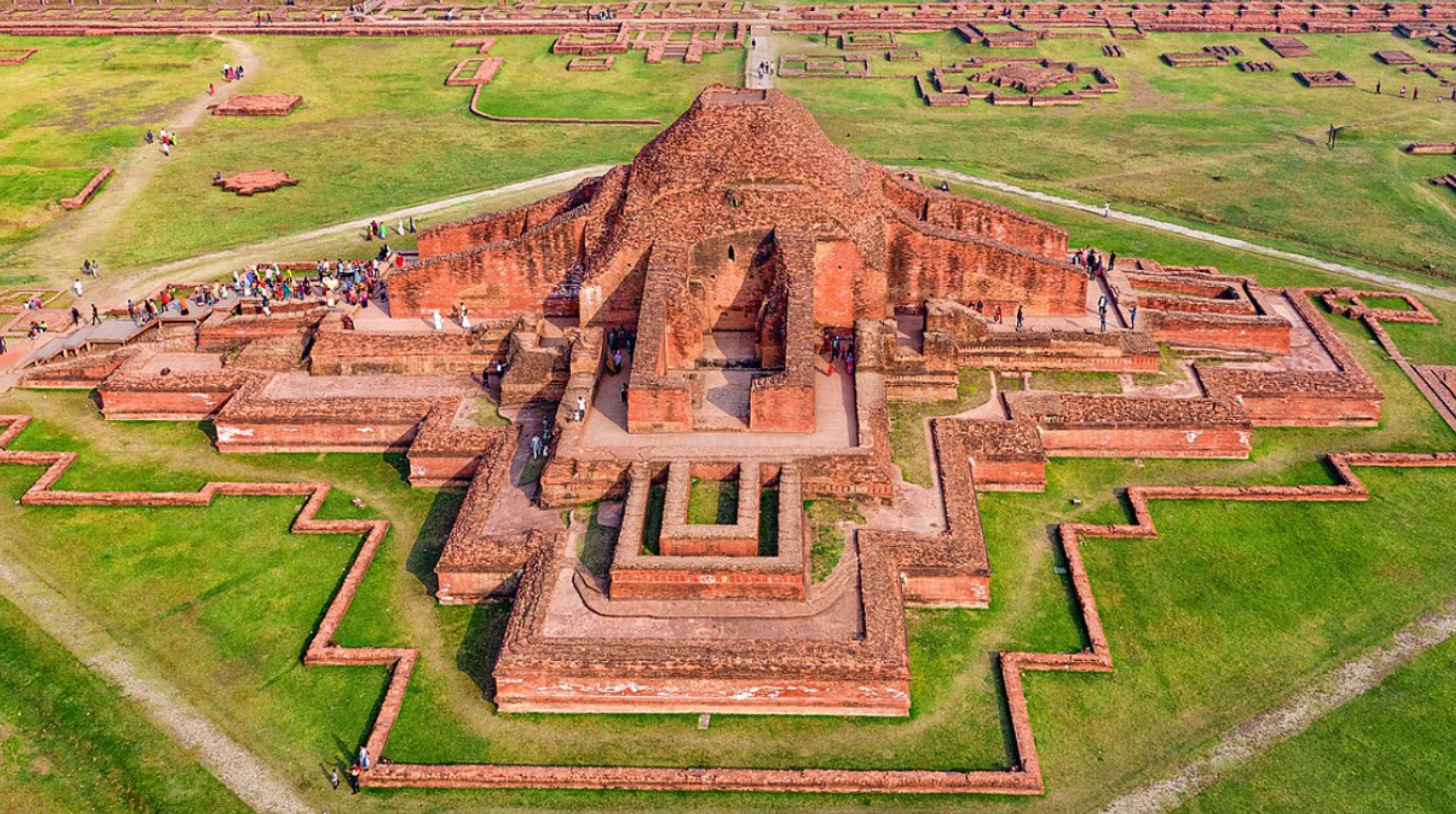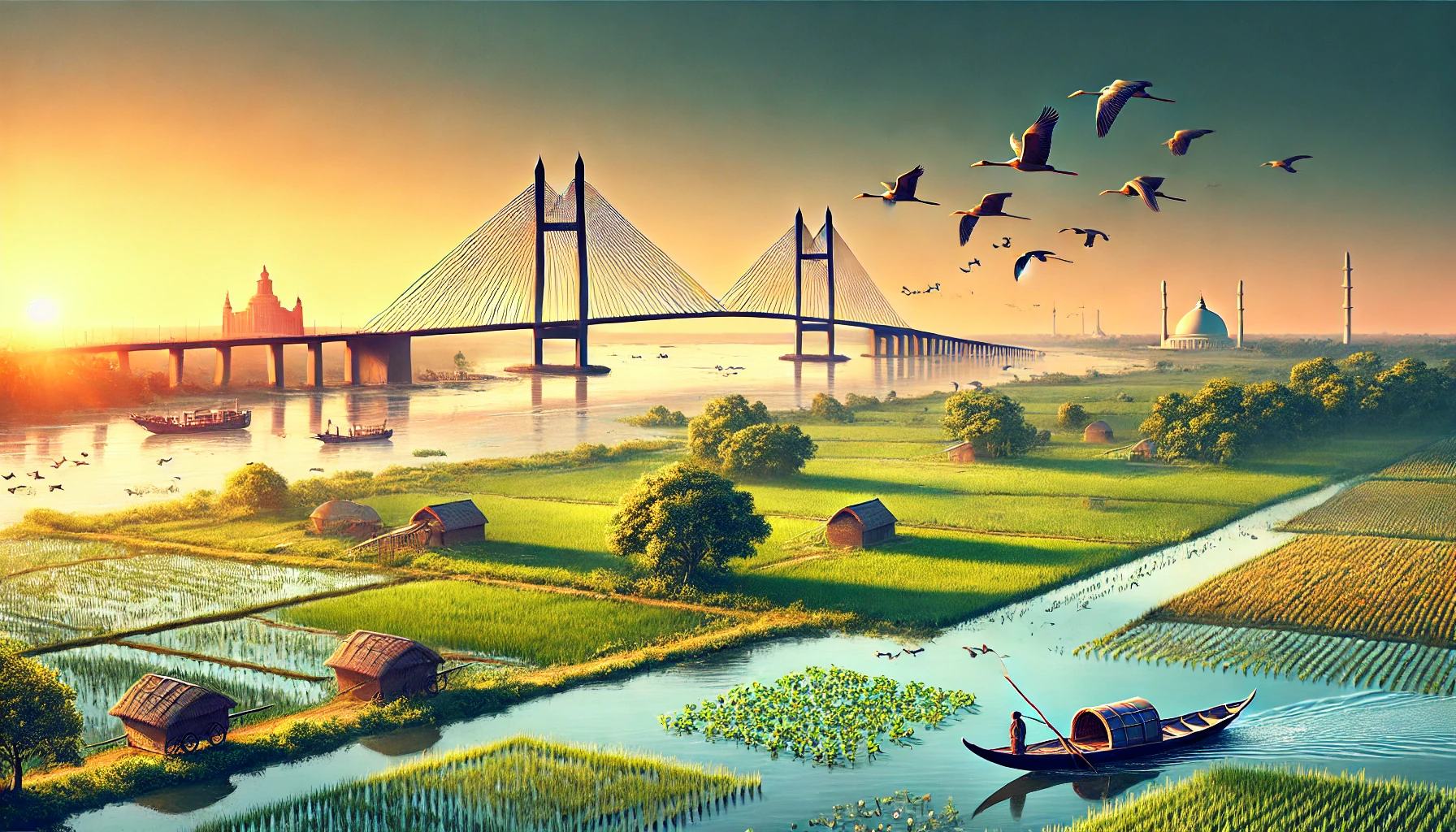Natore, a district in the Rajshahi Division of Bangladesh, is steeped in history and natural beauty. Known as the “Land of Palaces and Mangoes,” Natore has earned its place in the hearts of history enthusiasts, culture seekers, and nature lovers alike. With its lush mango orchards, iconic landmarks, and serene landscapes, Natore is a destination that offers something for everyone.
Natore Historical Overview
Natore has a rich historical narrative, closely tied to the Zamindari system during the Mughal and British colonial periods. The district was a prominent seat of power for the Dighapatia Zamindars, whose influence is still evident in the grand palaces and administrative buildings scattered across the region. Natore’s heritage is a blend of architectural grandeur and cultural richness, making it a window into the past.
Natural Beauty and Attractions
1. Uttara Ganabhaban
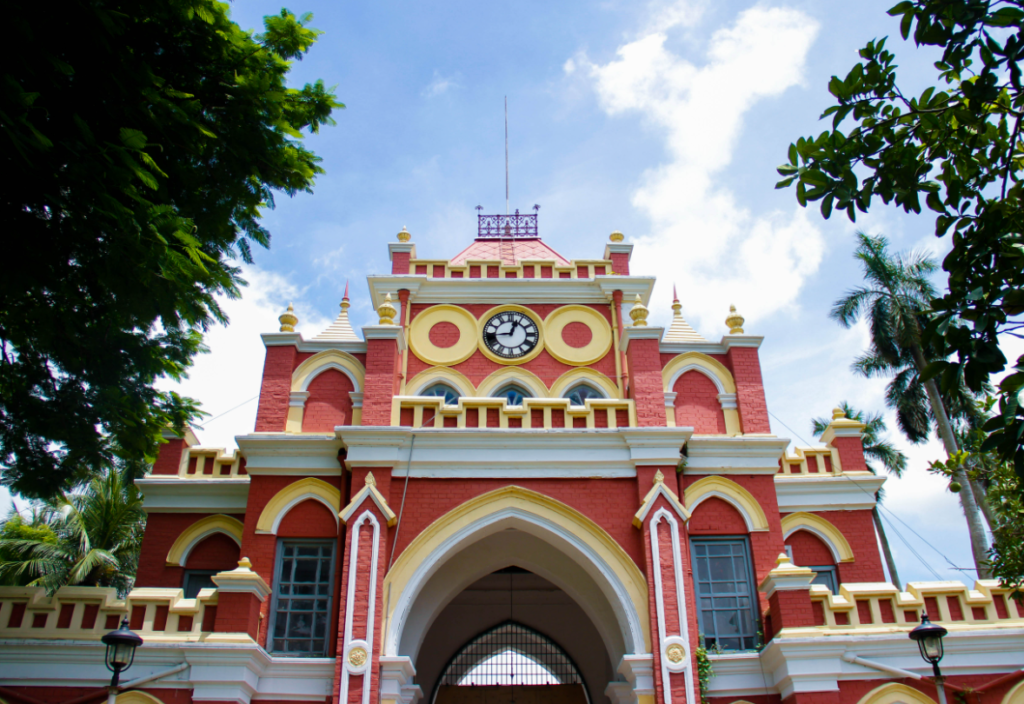
Uttara Ganabhaban
The crown jewel of Natore, Uttara Ganabhaban, is a magnificent palace that was once the residence of the Dighapatia Zamindars. Built in the 18th century, this stunning structure is now used as the official presidential residence for northern Bangladesh. Its vast gardens, serene lakes, and imposing architecture make it a must-visit landmark for history buffs and architecture enthusiasts.
2. Chalan Beel
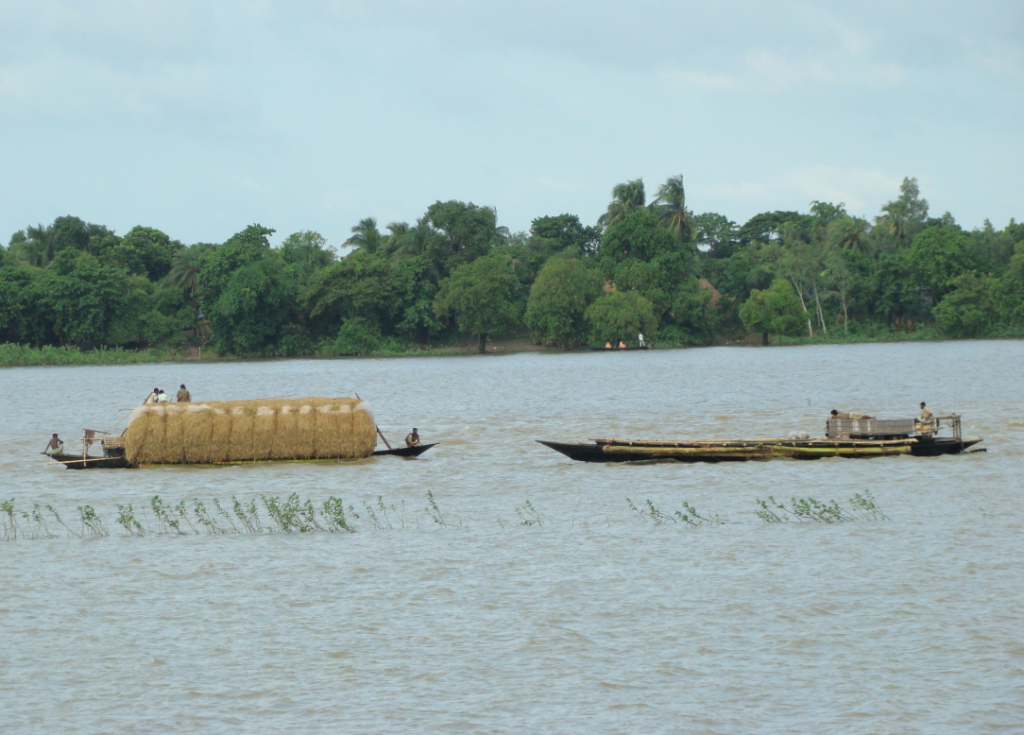
One of the most extensive wetlands in Bangladesh, Chalan Beel covers parts of Natore and neighboring districts. This sprawling beel (wetland) is a haven for migratory birds, aquatic life, and lush vegetation. Visitors can enjoy tranquil boat rides, observe diverse bird species, and experience the traditional fishing culture that thrives here.
3. Kachari Bari
Kachari Bari, the administrative headquarters of the Dighapatia Zamindars, showcases the architectural brilliance of its time. The building features intricate designs and stands as a monument to the administrative might of the zamindars.
4. Mango Orchards
Natore is synonymous with mangoes, producing some of the finest varieties in Bangladesh, including Langra, Himsagar, and Fazli. The district’s mango orchards attract visitors during the mango season (May to July) when the air is filled with the sweet aroma of ripe fruit.
5. Baraigram and Its Water Bodies
The upazila of Baraigram is home to parts of Chalan Beel and is a picturesque area filled with wetlands, rice fields, and serene landscapes. It is a perfect retreat for those seeking peace and natural beauty.
Cultural Heritage
Festivals and Celebrations
Natore comes alive during festivals like Pahela Baishakh (Bengali New Year), Durga Puja, and the annual mango festival. These events reflect the district’s vibrant cultural fabric and agricultural significance.
Folk Music and Dance
Folk traditions like Baul songs, Jari Gan, and Lathi Khela are still prevalent in Natore, offering a glimpse into the district’s artistic soul. Performances during local festivals are a must-see for cultural enthusiasts.
Handicrafts
Artisans in Natore are known for their exquisite bamboo crafts, pottery, and handwoven textiles. These traditional crafts not only preserve the district’s cultural heritage but also provide livelihoods for many families.
Upazilas of Natore
The district is divided into six administrative upazilas, each with its own charm and offerings:
- Natore Sadar:
The administrative heart of the district, home to Uttara Ganabhaban and bustling markets. - Bagatipara:
Known for its mango orchards and tranquil rural setting, Bagatipara is a slice of nature’s paradise. - Baraigram:
A scenic area featuring parts of Chalan Beel, Baraigram is ideal for eco-tourists and birdwatchers. - Gurudaspur:
Rich in history and natural beauty, Gurudaspur is a hub for folk traditions and serene water bodies. - Lalpur:
Famous for the Natore Sugar Mill and its vast agricultural lands, Lalpur plays a vital role in the district’s economy. - Singra:
Home to the largest portion of Chalan Beel, Singra is a hotspot for fishing and birdwatching activities.
Economic Significance of Natore
Agriculture
Natore’s economy is predominantly agricultural, with mango cultivation being the district’s crown jewel. Other major crops include rice, jute, and sugarcane.
Industry
The Natore Sugar Mill, one of the oldest sugar mills in Bangladesh, is a significant industrial establishment contributing to the district’s economy.
Dairy Farming
Dairy farming is gaining traction in Natore, with a growing number of farms producing high-quality milk and dairy products.
Getting to Natore
By Train:
Natore is well-connected to Dhaka, Rajshahi, and other major cities by rail. Trains are a comfortable and scenic way to reach the district.
By Road:
Regular bus services operate between Dhaka and Natore, offering affordable and efficient travel options.
By Air:
The nearest airport is located in Rajshahi, about 60 kilometers away, from where Natore can be reached by road.
Best Time to Visit
The ideal time to explore Natore is during the winter months (November to February) when the weather is cool and pleasant. The mango season (May to July) is another great time to visit, as the orchards are in full bloom and bustling with activity.
Final Thoughts
Natore is a district where history, culture, and nature converge to create a truly unforgettable experience. Whether you’re wandering through the majestic Uttara Ganabhaban, exploring the wetlands of Chalan Beel, or savoring the district’s famous mangoes, Natore offers a journey into the heart of Bangladesh’s rich heritage. A visit to this charming district promises to leave you with memories of its serene beauty, vibrant culture, and welcoming people.
